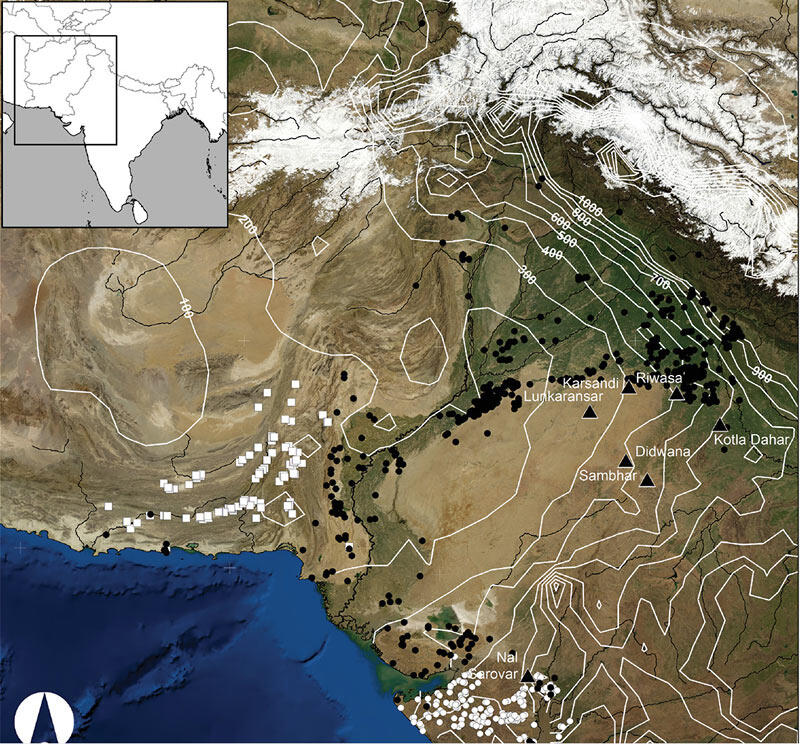Investigating Land, Water and Settlement in Indus Northwest India
An important contribution synthesizing many fields of research. The authors write: "This paper will explore the nature and dynamics of adaptation and resilience in the face of a diverse and varied environmental and ecological context using the case study of South Asia’s Indus Civilization (ca. 3000–1300 BC), and although it will consider the Indus region as a whole, it will focus primarily on the plains of northwest India." Among other things, the paper describes the varied agricultural ecosystems in different parts of the ancient Indus regions - "it is clear that Indus populations also occupied a diverse range of ecological niches or habitat zones." This means that any climate change - and there is evidence the authors argue from their analysis of a record at Lake Kotla Dahar in Haryana - issues would have been managed differently by different populations and cannot easily be said to have led to the demise of the Indus civilization. Indeed, Indus apparently populations showed great creativity and resilience in adapting to their environments and change. Then there is new data on the paleo-Ghaggar/Hakra river (sometimes called the Sarasvati and which is said to have flowed parallel to the Indus in the present Cholistan desert) - "the new data stand in contrast to a range of historical attestations to the existence of a mighty perennial river along this course in northwest India." Instead they argue for a river that came and went seasonally, and while it could have been of massive size at certain moments, it's meandering nature may help explain the many but possibly temporary Indus settlements along its course.
Fortunately, the complete article is also available for free from the University of Chicago at the link below, and includes rejoinders by two of the experts often published here, William Belcher and Rita P. Wright.
Image: Distribution of urban-phase Indus settlements (including sites with Kulli and Sorath-Harappan material and post-urban-phase Indus settlements, Map composed by C.A. Petrie
Abstract
This paper explores the nature and dynamics of adaptation and resilience in the face of a diverse and varied environmental and ecological context using the case study of South Asia’s Indus Civilization (ca. 3000–1300 BC). Most early complex societies developed in regions where the climatic parameters faced by ancient subsistence farmers were varied but rain falls primarily in one season. In contrast, the Indus Civilization developed in a specific environmental context that spanned a very distinct environmental threshold, where winter and summer rainfall systems overlap. There is now evidence to show that this region was directly subject to climate change during the period when the Indus Civilization was at its height (ca. 2500–1900 BC). The Indus Civilization, therefore, provides a unique opportunity to understand how an ancient society coped with diverse and varied ecologies and change in the fundamental environmental parameters. This paper integrates research carried out as part of the Land, Water and Settlement project in northwest India between 2007 and 2014. Although coming from only one of the regions occupied by Indus populations, these data necessitate the reconsideration of several prevailing views about the Indus Civilization as a whole and invigorate discussion about human-environment interactions and their relationship to processes of cultural transformation.

